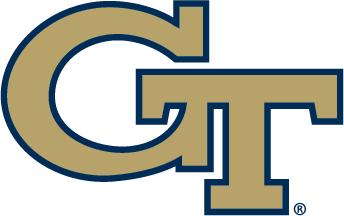Jan. 20, 2018
By Andy Demetra
– On short turnarounds, coaches often have to balance competing interests. They have to break down the last game with their team, but they also have to prepare them for the game ahead. A game can’t be dismissed outright, lest any lessons get lost. Players still have to read the page before they can turn it. But how much time should a coach dedicate to what happened the night before, when the next game is coming up so soon?
With barely 40 hours separating the end of Georgia Tech’s game versus Virginia and its contest with No. 15 North Carolina, Josh Pastner kept his debriefing of Thursday’s game succinct.
“Eighteen turnovers,” the Yellow Jackets’ head coach said in our post-game radio interview.
That’s it. The entire message to his team. Eighteen turnovers, the number Tech committed in its 64-48 loss to No. 2 Virginia. Commit that many again, and their chances for a win drastically go down.
Tech will try to rest up – and tighten up – as they prepare for the defending national champion Tar Heels (15-4, 4-2 ACC), a team that until Tuesday was forcing the fewest turnovers per game in the ACC.
To get you ready for tip-off, here are the top five notes from my chart in preparation for Saturday’s contest at the Smith Center (2 p.m. EST, Georgia Tech IMG Sports Network):
**
Not only must Georgia Tech deal with a short turnaround, they have to adjust to a dizzying change in pace. Virginia plays at the slowest adjusted tempo in the nation – 351st out of 351 teams. North Carolina ranks 33rd. The Yellow Jackets have only faced two teams this year that rank in the top 100 (UTRGV and Grambling State).
For a team on short rest, succumbing to a fast tempo is an ever-present threat. So is offensive rebounding – the Tar Heels rank sixth nationally in offensive rebounding percentage, grabbing a board of 37.6 percent of their misses. It may take an “all hands on deck” effort to ward off UNC’s pressure on the glass. Also, can Georgia Tech make an adjustment from the Virginia game and prevent UNC from making straight-line drives to the rim?
**
Luke Maye played 11 minutes off the bench in Tech’s 75-63 upset over the Tar Heels last year. The forward finished with six points and six rebounds, though his impact felt muted by his modest minutes.
Maye won’t sneak up on anyone this year. The junior has emerged as a bona fide ACC Player of the Year candidate, leading North Carolina in scoring (17.8 ppg), rebounding (10.2 rpg) and three-point percentage (48.2 percent, 10-19 ACC). At 6-8 and 240 pounds, Maye can both run off screens – he has an unusually quick release for someone his size – and post up on smaller defenders, a versatility that makes him a vexing matchup for opponents.
Also, if Georgia Tech is up late, let’s hope comeback ability isn’t a hereditary trait. Maye’s Dad, Mark, a former UNC quarterback, led the Tar Heels to their largest comeback win in school history over Georgia Tech in 1986. UNC trailed 17-0 before rallying to win 21-20.
**
Georgia Tech wanted to take away the three-pointer from Virginia. The Yellow Jackets checked that box: the Cavaliers finished 3 of 13 from long range, with their top three shooters, Devon Hall, Kyle Guy and Ty Jerome, all struggling.
Virginia 3-point shooters
Devon Hall, Kyle Guy, Ty Jerome combined average: 44.8% 3pt.
vs. Georgia Tech: 18.2% (2 of 11)
North Carolina leads the ACC in three-point percentage (38.5%), blending ball reversals, drive-and-kicks and secondary transition to get their looks (UNC in general is tremendous in secondary transition). Their offensive rebounding can also lead to kickout threes, where shooters like Joel Berry (37.7 percent), Kenny Williams (42.7 percent) and Pitt graduate transfer Cameron Johnson (six 3-pointers against Clemson) will roam for shots.
Georgia Tech used its switching defenses to subdue Virginia’s three-point shooting Thursday. Can the Yellow Jackets do the same against the Tar Heels? And can Tech win the scramble plays and 50-50 balls – something that eluded them against UVa – to avoid those kickout threes? The Yellow Jackets’ confusing defenses also forced 20 North Carolina turnovers last year, a season-high for the Tar Heels.
**
“I talked to him before the game. It’s a funny thing. I said, ‘Curt, I need three threes or more. He’s like, ‘Alright I got you.’ He hit his third three, [and] he looked at me. I was actually still on the bench. He was like, ‘You need to give me another number.’”
-Tadric Jackson on guard Curtis Haywood II, who made 3-of-4 three-pointers against Virginia. The freshman continues to round into form after missing seven games with a bruised shin. Prior to his injury, Haywood had made 11 of his last 19 threes.
Could three-point opportunities be plentiful Saturday? North Carolina forces an astonishingly high percentage of its opponents’ points to come from long range – 46.2 percent, a figure that ranks second in the country.
**
Now that we’re prepared, we hope you are as well. Our pregame coverage starts at 1:30 p.m. EST on the Georgia Tech IMG Sports Network. See you in Chapel Hill. –AD–









